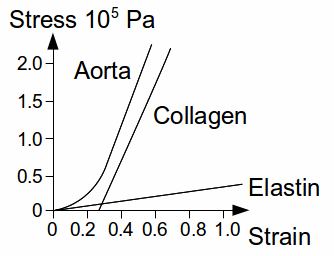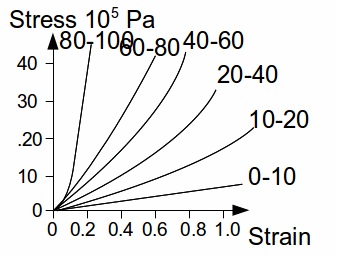When the heart operates to pump blood around the body, it raises the blood pressure, leading to stresses and strains in the the circulatory system. The volume of the aorta and large arteries increases as the heart pumps blood into them. The tension in the walls of the arteries increases and they are stretched. The arteries are actually made of different types of material. Two of these are elastin and collagen. Elastin is easily stretched – it is about six times more stretchy than rubber. Collagen is much stiffer, and a small amount of collagen can make an artery resistant to stretching. Usually though, the collagen itself does not start to stretch until the aorta has been already stretched somewhat. A typical stress strain curve for the aorta is shown below along with curves for elastin and collagen.

The slope of the stress strain curve is the Young's modulus for the material and is a measure of how stiff the tissue is. Stiffer tissues have higher values of the Young's modulus. As the aorta starts to stretch, the stress strain curve follows the elastin curve, but as the collagen becomes tensed, it becomes nearer to the collagen curve.
As a person ages, the blood vessels become richer in collagen and the collagen fibres lose a degree of slackness. The stress strain curves tend to follow the collagen curve more closely as shown below.

